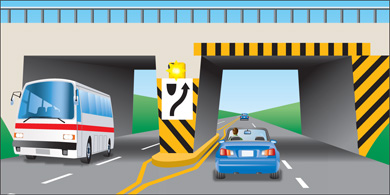Pavement markings
Pavement markings work with road signs and traffic lights to give you important information about the direction of traffic and where you may and may not travel. Pavement markings divide traffic lanes, show turning lanes, mark pedestrian crossings, indicate obstacles, and tell you when it is not safe to pass.
Yellow lines separate traffic travelling in opposite directions. White lines separate traffic travelling in the same direction.

A solid line at the left of your lane means it is unsafe to pass. (“A” should not pass.)
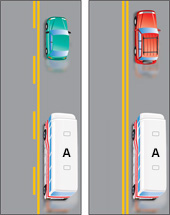
A broken line at the left of your lane means you may pass if the way is clear. (“A” may pass if there are enough broken lines ahead to complete the pass safely.)

Broken lines that are wider and closer together than regular broken lines are called continuity lines. When you see continuity lines on your left side, it generally means the lane you are in is ending or exiting, and that you must change lanes if you want to continue in your current direction. Continuity lines that appear only on your right mean your lane will continue unaffected.

A stop line is a single white line painted across the road at an intersection. It shows where you must stop. If there is no stop line marked on the road, stop at the crosswalk, marked or not. If there is no crosswalk, stop at the edge of the sidewalk. If there is no sidewalk, stop at the edge of the intersection.
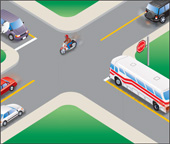
A crosswalk is marked by two parallel white lines painted across the road. However, crosswalks at intersections are not always marked. If there is no stop line, stop at the crosswalk, marked or not. If there is no crosswalk, stop at the edge of the sidewalk. If there is no sidewalk, stop at the edge of the intersection.
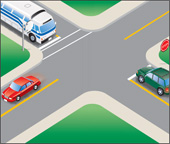
A white arrow painted on a lane means you may move only in the direction of the arrow.

A pedestrian crossing — or crossover — is marked by two white double parallel lines across the road with an X in each lane approaching it. Stop before the line and yield to pedestrians.
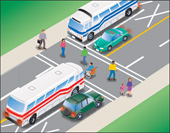
Two solid lines painted on the pavement guide traffic away from fixed objects such as bridge piers or concrete islands. Usually a sign is affixed to the object, and the object is painted with yellow and black markings.
